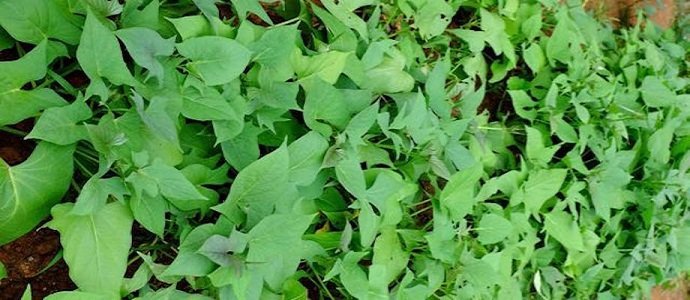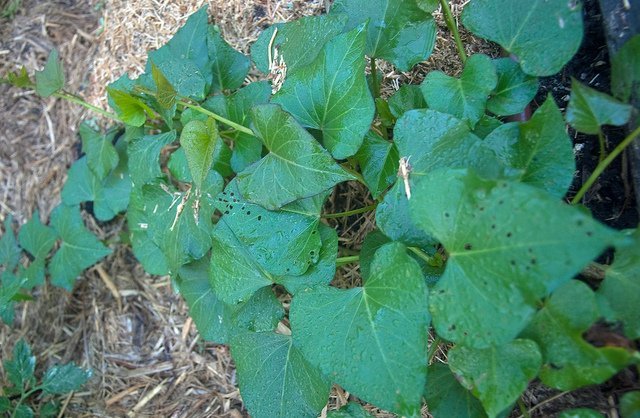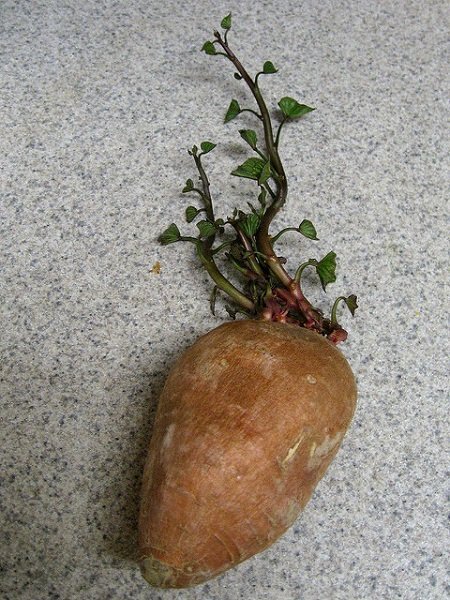
Most of us, or at least those of us would think about such things, consider sweet potatoes to be hot weather crop. After all, they do come from tropical roots (yes, that is gardening word play), and they aren’t the biggest fans of cold weather.
But, this isn’t to say that they can’t be grown elsewhere and add another stomach-stuffing staple to the mix.I’ll never understand why sweet potatoes never quite got the same billing as normal potatoes. They are easy to grow, in some places, nearly unstoppable. They provide much more nutrition. They are wickedly versatile in the kitchen, well-suited for brownies and equally so for a hot bowl of stew. What’s more, sweet potatoes are great additions to a permaculture garden, wherever it may be.
Climate-friendly crops
Sweet potatoes are perennial in climates that remain warm year-round, but they can serve as a highly productive annual in cooler areas. Obviously, for those of us in the right environments, the perennial staying power is a real positive in garden design.
But, beyond those lines, the basics of the sweet potato are that it doesn’t like to be in ground colder than ten degrees Celsius, will go dormant at about fifteen, and grows-to-thrives from twenty up, doing better the hotter it gets. To grow them in places like Canada or England, it may require a heat trapping cover (some suggest reused clear builder’s plastic), but appropriate mulching might just work.
Not too picky
Whichever the case, they are easy plants to grow. They are most turned on by loose, sandy soil, but they do just about as well in heavy clay. Sweet potatoes benefit from rich soils, yet they’ll make do with less, still providing a decent crop.
Even when it comes to water, the plants need regular rain; however, if they must, they’ll endure a drought and get back to growing with the waterworks kick off again. The only thing sweet potatoes really can’t tolerate is a cold temperature, so they can be a great crop for early garden beds, not yet matured into wonderfully rich loam.
In the tropics, I just stick slips in the ground—clay, sand, dry season, wet season—and always managed to produce them in abundance.
Multipurpose plant

The obvious reason to plant sweet potatoes is that it produces delicious tubers, but there are many more positives to the plant. In fact, the tubers are not the only thing edible. The leaves and stems are commonly used throughout the world as greens, and in the tropics, where many typical greens don’t like the heat, this is of even more value.
But, as designers, we can also rely on sweet potatoes to be great, edible groundcovers that can function for human or animals fodder. They multiply easily, simply by putting a new slip in the soil, and the vine grows quickly.
They are also both drought and flood tolerant, which helps keep the garden green in most circumstances. In short, they can provide a lot of functionality in the kitchen and the garden.
Stores well
Sweet potatoes are one of the best storage foods that we can grow. When cured correctly (about a week or two in hot, humid place), which is how they become sweet, they can last months without much change. The curing process covers over nicks and cuts, protecting the sweet potatoes from spoilage. This is great news for those of us who struggle to keep the cabinets full and fresh in the wintertime. Sweet potatoes will keep, and as you are about to find out, they’ll provide a lot of nutrition when it comes time to eat. For those with dehydrators, dehydrated sweet potato chips are fantastic, and like most things, they’ll keep for a long time in this state.
Nutritive value
Sweet potatoes, beyond being flavorful and naturally (obviously) sweet, are health food. They are packed with beta-carotene, more than just about anything else, including carrots. They are also a solid source of vitamin C and dietary fiber. Mineral-wise, sweet potatoes are good providers of manganese (crucial for healthy bones and absorbing calcium) and potassium. They have proven useful for diabetics, helping to control blood sugar levels and insulin resistance. Their nutrient profile promotes a healthy heart, good digestion, a strong immune system, and enduring eyesight.
Fantastic variety
Most of us associate sweet potatoes only with those varieties that have orange flesh, but like spud potatoes, there are lots of colorful choices, a pleasant thing for the dinner plate and the garden (the foliage varies as well). In addition to those trademark orange varieties (Beauregard is what my great-grandfather grew), there are spectrums of yellow, white, and purple. However, one thing that we should not confuse is the yam (Dioscoreaceae family) and sweet potato (Ipomoea family, of South America), a common mistake in the USA, due to bad labeling. In actuality, yams are closer to cassava and have a lot less nutritive value than sweet potatoes.
Easy to start

While sweet potatoes can produce and be grown from seeds, that is not the typical or preferred method. They grow best from
They grow best from “slips”, the roughly ten to fifteen-centimetre ends of the vines.
If someone nearby is growing them, then they’ll surely be happy to part with a couple of ends to get your own started.
But, it’s easy enough to start them from an actual sweet potato by simply putting the potato in some water (lots of people stand them upright in jars) and allowing it to start growing.
From this, the slips are snipped off and planted.
Growing from slips is said to produce a better harvest than planting the potatoes themselves.